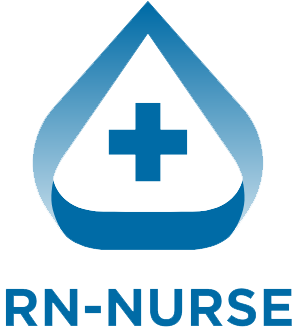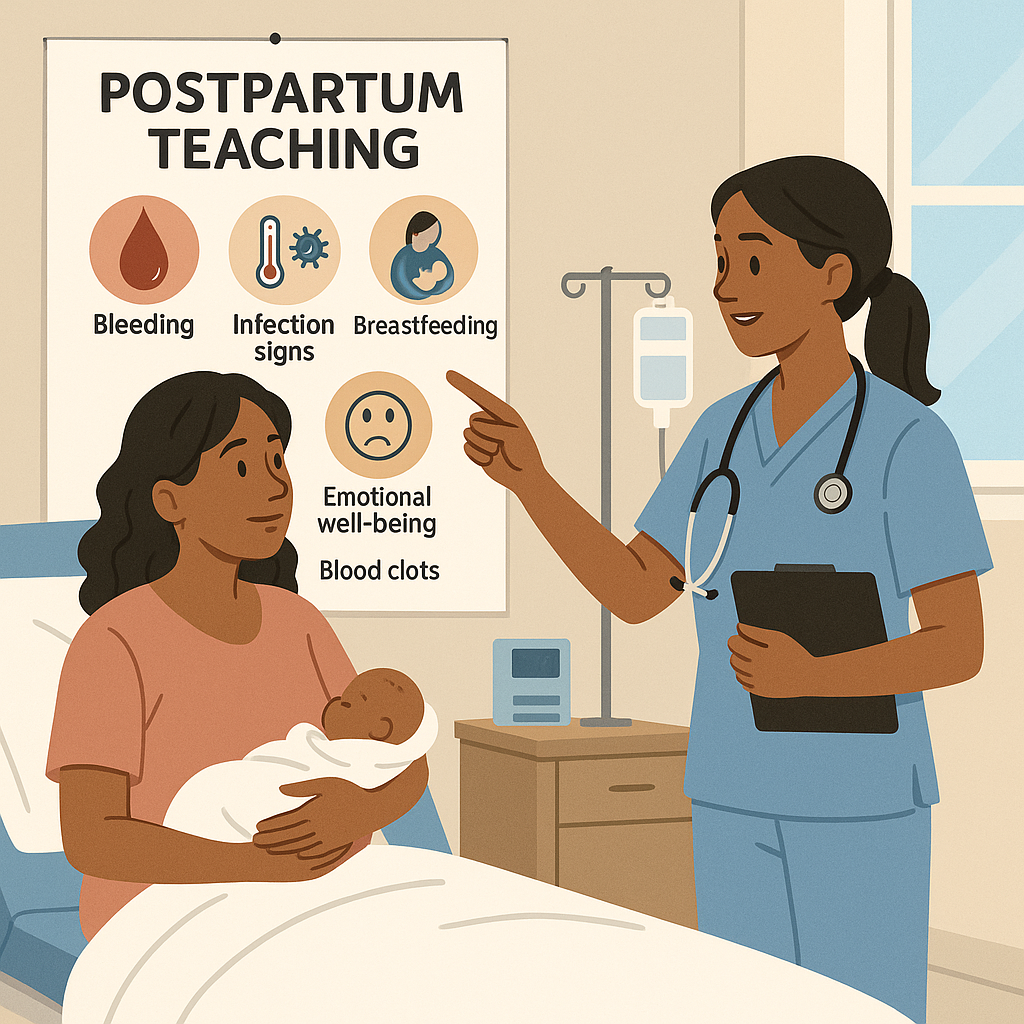Bringing a new baby home is exciting, but the postpartum period is also a critical time for both mom and newborn. As a registered nurse (RN nurse), your role doesn’t end at delivery—you play a key part in patient teaching and ensuring safe recovery. For NCLEX prep and real-world practice, nurses must master postpartum education. This guide highlights essential nursing teaching points that every new mom should know after birth.
🌸 Why Teaching Points Matter in Postpartum Nursing Care
Patient education is one of the nurse’s most important roles. Many complications after delivery can be prevented if moms know what to watch for. Whether you’re preparing for the NCLEX or practicing as a registered nurse, clear, simple teaching ensures both safety and confidence for patients.
🔑 Key Postpartum Teaching Points for Moms
1. Bleeding (Lochia)
- Normal: Starts heavy, turns pink/brown, then yellow/white.
- Warning Signs: Soaking more than one pad per hour, passing large clots, or foul odor → may indicate hemorrhage or infection.
- Nursing bundle tip: Teach moms to track bleeding patterns.
2. Breast Care
- Encourage breastfeeding on demand every 2–3 hours.
- Watch for engorgement, cracked nipples, or mastitis (pain, fever, redness).
- Use warm compresses before feeds, cold compresses after for comfort.
3. Incision and Perineal Healing
- C-section incision: report redness, swelling, pus, or fever.
- Vaginal birth/perineum: use peri-bottle after urination, change pads frequently, and watch for signs of infection.
4. Signs of Infection
- Fever >100.4°F (38°C).
- Severe abdominal pain.
- Foul-smelling vaginal discharge.
- These require immediate nurse or provider follow-up.
5. Bladder & Bowel Function
- Encourage hydration, fiber, and ambulation.
- Report pain or burning with urination.
- Constipation is common—stool softeners may help.
6. Emotional Well-Being
- Baby blues are normal for 1–2 weeks.
- Persistent sadness, hopelessness, or trouble bonding may indicate postpartum depression → needs professional help.
- Teach moms it’s okay to ask for support.
7. Warning Signs of Blood Clots
- Swelling, redness, or pain in the leg.
- Shortness of breath or chest pain → emergency.
8. When to Call the Doctor Immediately
- Heavy bleeding.
- Severe headache or vision changes (preeclampsia warning).
- High fever.
- Difficulty breathing or chest pain.
📌 Quick NCLEX Tip
For the NCLEX, remember: Teaching is a priority nursing intervention. Postpartum complications like hemorrhage, infection, and preeclampsia often appear in exam scenarios. Always think: What should the nurse teach the patient before discharge?
✅ Key Takeaway
The postpartum period is a time of healing and adjustment. Nurses and registered nurses are critical in educating new moms on what’s normal and what’s not. By following these nursing bundle teaching points, you can ensure safer recoveries and empowered parents.

